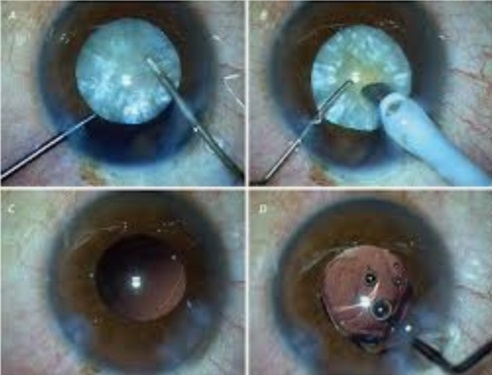A cataract is a cloudy or opaque area in the normally transparent lens of the eye. As the opacity thickens, it prevents light rays from passing through the lens and focusing on the retina.
Cataract is clouding of normal clear crystalline lens of the eye. It leads to decrease or loss of functional vision. It can be compared to a window that is frosted. The amount and pattern of cloudiness can vary within the lens. Cataract formation is not associated with "signals" such as pain, redness or tearing.
The common symptoms are:

Advanced No injection Cataract surgery. Topical anesthetic drops are used for surgery. So No eye patch is required after surgery. It also eliminates the risks & pain of injection anesthesia. Cataract surgery removes the natural cloudy lens from the eyes and replaces with artificial lens. Phaco means lens and Emulsifying means to break into pieces through a small incision

Latest laser Cataract surgery using LenSX machine gives high accuracy of post operative results. Most steps are done by LASER avoiding blade use.
Foldable Intraocular Lenses
Advantages of Phacoemulsification Surgery
What Care Should I Take After Surgery?